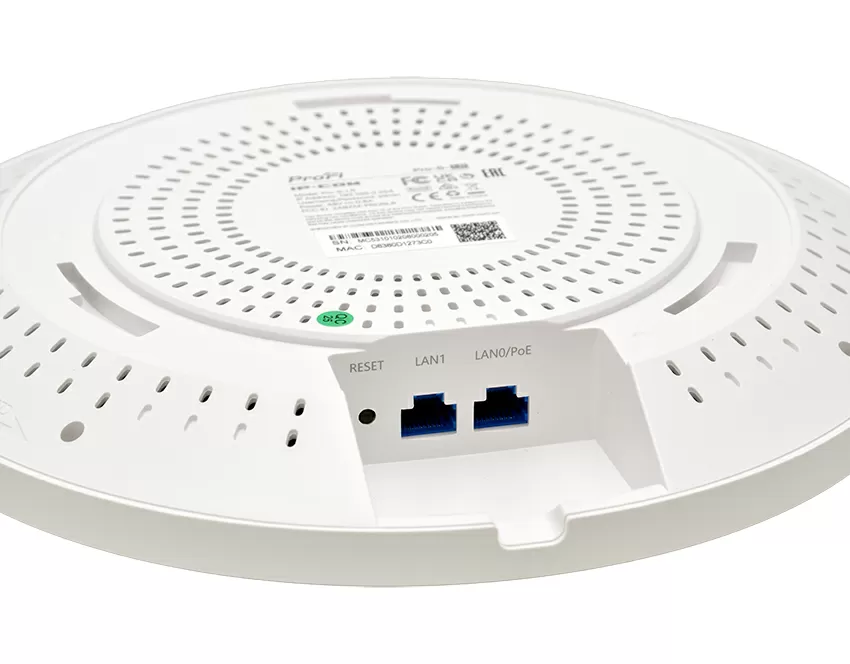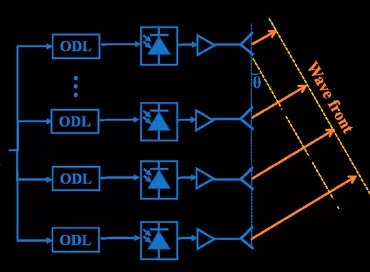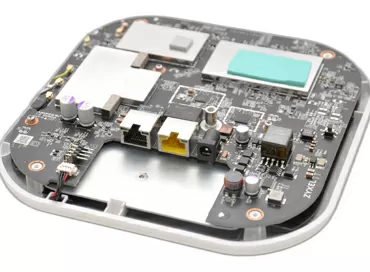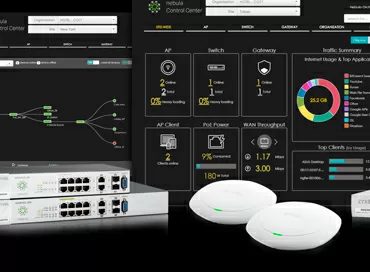Overview of the capabilities of the IP-COM ProFi controller for wireless networks
In the IP-COM company's model range, a separate direction has been allocated for equipment controlled by centralized ProFi software. Today, even in small projects, it is important to be able to make friends with the switch with access points not only at the network level, but also in a visual editor, placing the devices on the floor map in order to track statistics from one window, update firmware, decommission and change devices without disrupting the network. Currently, these capabilities make it possible to simplify and, consequently, reduce the cost of both the initial commissioning of devices and further maintenance of the network.
In this review, we will look at the process of installing and configuring the ProFi controller, find out what it can and what it can't. But before we move on, I want to make a small digression regarding the network management mechanism. If 3-4 years ago a hardware controller was considered as an alternative solution and most often represented a separate box in a telecommunications cabinet, today it is either a software platform somewhere in the cloud, working through a mobile application, or a software controller with a Web interface. Hardware platforms, in turn, remain only on the largest projects, but even there they are gradually being replaced by flexible software solutions.
Main features of the ProFi controller
The ProFi software controller is designed to control wireless access points and switches.
- Automatic network optimization
- One installation supports the management of up to 1000 access points
- Managing device updates and configurations
- Dynamic display of metrics and performance indicators
- Sending notifications and alerts
- Centralized Captive Portal
At the time of preparing the review, there was not a single compatible router in the ProFi-device family, although it is indicated on the schematic diagram of the network, and may soon appear, allowing customers to assemble mono-brand networks entirely on IP-COM equipment.
The ProFi controller runs under Windows (Windows). It does not require a lot of resources: a virtual machine with 4 GB of RAM and 10 GB of hard disk space is enough. If there is nothing to run it on, it can work in the IP-COM cloud. After installation, the ProFi controller will automatically start, and further configuration will need to be done through the Web interface.
To manage a local service, you need to register using E-Mail in the IP-COM cloud service, that is, the vendor's service still manages authorization. By default, the email address is used to send notifications and warnings about changes in the network, in particular about disconnecting devices, lack of Internet access, etc. The list of notifications is configurable, as will be discussed below. At this stage, we will be asked to create a Wi-Fi network and specify the SSID so that in the future we can simply add access points to the network without any settings.
After installation, we will be offered to configure automatic network optimization, which means adjusting the power of the access point transmitters to reduce interference and mutual influence. In large business centers, where traditionally the entire radio frequency range is occupied by tenants' devices, this is an invaluable service. In the future, you will be able to run optimization on a schedule, without interrupting the network. After the initial setup is done, you can proceed to configuring the devices.
Device capture and automatic configuration
One of the most important advantages of working with software controllers is manifested when installing a wireless network: you do not need to configure access points out of the box at all, just connect them to the power supply and to the local network, after which they appear in the ProFi interface with the status "Pending", meaning that the point can be captured for control and added to the network, by pressing just one button.
When capturing access points, the controller saves a default login/password pair, so if you need to individually set device parameters, you will have this opportunity.
Using the floor plan
For a simple visual orientation on the object, the controller provides loading of a map or a floor plan in the usual graphic format. You can upload several such maps for different premises: for a warehouse, garage, office or courtyard area, and then place your access points on them.
Now, highlighting each of the hot spots, you can immediately go to its settings and see the list of connected clients, CPU and memory usage, as well as diagnostic information: radio channel, wireless networks used, IP address and connection speed. Here, with one click, you can overload the access point or turn on a flashing LED on it for easier identification on the ground, although it is much easier if you have such a map.…
The entire fleet of devices of the facility is located on one tab "devices", and here you can see the CPU and memory usage of access points and switches, as well as the version of their firmware, and whether an update is available without opening additional windows.
Information about clients
Perhaps one of the most useful functions today is customer information, in particular, it allows you to quickly find out who is connected to 2.4 GHz and who is connected to 5 GHz, so that in case of an incorrect configuration of the client, you can configure the wireless adapter of his device to connect to a freer frequency range.
When using a compatible gateway, here, in a single space, you can change the IP addresses of client devices, for example, by issuing static ones. At the time of preparing the review, IP-COM had not yet presented a gateway with ProFi control, however, according to information from the vendor, such a device should go on sale before the end of the year.
Here you can view the status of clients connected via cable, as well as using guest access. If the network is deployed in places that imply public access to Wi-Fi, a built-in Captive Portal can be used, to which third-party authorization services can be connected. From the built-in, authentication is supported with a simple password, a third-party service or via the Facebook Wi-Fi service. The start page template can be customized by uploading your logo and background.
Events and Notifications
The ProFi controller stores all network events for 30 days, and for each of them you can set up an alarm or an E-Mail notification. There is complete freedom for the administrator here: all kinds of processed events are divided by device types: access points, gateways, switches, as well as client devices and administrator actions.
There is no built-in export to the Syslog server, but all logs are stored in plain text in a folder at \installation path\log, and if you need to export them to a third-party monitoring system such as Elastic or Zabbix, it will not be difficult to configure the log collector.
Pro-6-LR access point
As you may have noticed, in our test we used two access points from a series of long-range ceiling PoE models. We will consider the iUAP-AC-LITE model in another article, and now I would like to focus on the new Pro-6-LR. This is a fairly large model with a diameter of 255 mm with support for 802.11ax (Wi-Fi 6) and the 2x2 MU-MIMO antenna formula, which has a total bandwidth of around 3 Gbit/s, limited "from below" by two network interfaces with a speed of 1 Gbit/s.

A distinctive feature of the Pro-6-LR model is support for 160 MHz channel width, which is very much in demand in wireless client connection scenarios that require high network bandwidth, such as 8K video playback panels, VR cameras, video surveillance servers and other high-speed devices.
As befits a high-end product, the access point supports both WPA3-ASE and technologies that have already become mandatory in this price segment, switching customers to the 5 GHz band (Band Steering, or 802.11 k/v), increasing the range due to beamforming. There is also VLAN support for isolating clients at the L2 OSI.

In warm areas, the IP-COM Pro-6-LR model can be installed outdoors, since the operating temperature range is from -10 to +45 degrees Celsius, but since there is no protection against moisture ingress, it is necessary to mount the access point under the roof.

This model has 2 network ports with a speed of 1 Gbit/s, one of which supports power over the PoE line of the 802.3at standard. The maximum power consumption is 15.74 watts, so an inexpensive PoE switch will be enough to upgrade the existing network infrastructure, but this is not necessary either, since a very compact PoE injector with "ears" for mounting to the wall or ceiling is supplied.

The design of the antennas implies installation exclusively under the ceiling. The shape of the antennas used assumes a vertical orientation.
Judging by the diagrams, the access point has a uniform coverage, which implies placing it in the center of a large hall. The antenna gain is quite ordinary: up to 4 DB and.

The heat from the RF unit is transferred to a massive aluminum plate, which also serves as a screen for electronics on the motherboard. A large, spacious housing quite allows itself to do with such an uncomplicated cooling system without the risk of overheating and throttling.
The access point can work not only under the control of the ProFi controller, but also in offline mode, as well as under the control of the application's cloud application, IP-COM IMS, for which you need to flash the device with the appropriate firmware version. If ProFi is more suitable for granular network setup and displaying metrics in a visually pleasing way, then IMS is more of a project manager that helps organize the network and configure its components. To access the service, you need to register, add a link to your favorites and create a project to which you will add switches, access points, etc. By the way, in a large friendly team you can work together with colleagues on projects, which is especially convenient when working remotely.
When testing, I was interested in how far it would be possible to connect with a regular smartphone to an access point so that the VPN would work steadily. The access point was located on a balcony, in conditions of dense urban development, at a height of 35 meters, the smartphone was in his hands, standing on the ground, in a straight line from the access point, with a line of sight. Stable communication was observed at a distance of 260 meters, which generally exceeds the performance of long-range access points of the 802.11ax standard.
Conclusions
The ProFi control controller mainly reduces the labor costs for the initial commissioning of the network and subsequent monitoring. There are already enough similar solutions on the market today, but it is IP-COM that is good because at any time your ProFi configuration can be transferred from a local machine to the cloud. The process of such migration is carried out at the touch of a button and takes about 3-4 minutes. So in case of failure of the management server, control over the wireless network will not be lost.
It should be borne in mind that ProFi management is not the only and mandatory option for building a network on IP-COM equipment: new access points can be organized into a single network using an application on a smartphone, or you can do all the settings manually in the old-fashioned way, through the device's Web interface.
Michael Degtjarev (aka LIKE OFF)
09/07.2022
























































